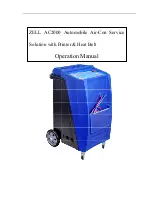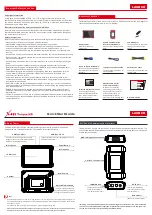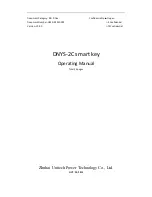
Matters to Be Observed When Using This Product
A capacitor conforming to "AEC-Q200" refers to a capacitor having passed some or all of evaluation test items defined
in AEC-Q200.
To know the detailed specifications of each capacitor or specific evaluation test scores, please contact us.
We issue a delivery specification sheet for each product ordered. Please confirm the delivery specification sheet when
you place an order with us.
■
To prevent a case where a transient load (e.g., a pulse for a short period) too large for the product to handle is applied,
make sure to evaluate and confirm the operation of the product incorporated in your product. Applying power or voltage
(current) larger than the rated power or rated voltage (current) to the resistor may impair its performance and reliability.
Make sure to use the resistor with power or voltage (current) equal to or lower than the rated power or rated voltage
(current). The product warranty does not cover usage where an excessively large load, such as a pulse current, is
applied to the product.
■
The resistor may have a high temperature even when used with power equal to or lower than the rated power. Be careful
in such cases. Another factor to be considered are effects on the board, peripheral components, etc., and the effects of
peripheral components on the resistor. Make sure to confirm first that the temperature of the resistor incorporated in your
product is equal to or lower than the specified temperature, and then use the resistor.
■
When the resistors are connected in series or parallel, loads applied respectively to the resistors may not be equal to
each other. Check whether the loads are equal in the actual circuit in which the resistors are incorporated.
■
When a resistor is used in a high-frequency circuit, the resistor may fail to offer the required characteristics. Check
whether the resistor offers the required characteristics in the actual circuit in which the resistors are incorporated.
■
Be careful that unusual stress caused by an excessive bend of the printed board is not applied to the resistor. Design the
circuit structure such that the resistor is not close to a perforated line for board splitting or on a line with sizable holes
bored on the board.
■
When a different component is mounted on the board where the resistor has been soldered, be careful that the board
does not bend excessively. If necessary, provide the board with backup pins (support pins) to keep it straight.
■
Avoid manual board splitting. Use a jig, etc., to break the board so that it does not bend excessively when split apart.
■
When the product is used under mounting conditions departing from mounting conditions specified in our specification
sheet, the product may be exposed to unexpected stress to fail. Be careful to avoid such a case. When mounting the
resistor on a printed board, set the resistor’s front and back surfaces in the direction indicated by the tape. Make sure to
evaluate and confirm the operation of the resistor incorporated in your product and determine whether the resistor is
usable as a component of the product.
■
Set soldering conditions for the resistor within the recommended soldering conditions specified by our company. Any time,
soldering condition departing from the specified soldering condition, such as a high peak temperature or a long heating
may impair the performance/reliability of the resistor. Note that the specified soldering conditions indicate conditions
under which degradation of the resistor characteristics does not occur but do not indicate conditions under which stable
soldering can be performed. Check and set individual conditions under which stable soldering can be performed.
■
Heat the resistor in advance so that a difference between the soldering temperature and the temperature of the resistor
surface is reduced to 100
℃
or lower. When dipping the soldered resistor in a solvent, etc., to cool the resistor rapidly,
ensure that the temperature difference between the resistor and the solvent is 100
℃
or lower during the dipping.
■
When soldering the resistor using a soldering iron, apply hot air, etc., to the resistor to heat it sufficiently in advance and
then solder the resistor without bringing the soldering iron tip into contact with the product. If the temperature of the
soldering iron tip is high, finish the soldering work quickly (within 3 seconds when the temperature of the soldering iron
tip is 350
℃
or lower). In the case of a fixed resistor with low resistance, the resistor may fail to offer the exactly intended
resistance value because of the variation in the solder volume, etc. Make sure to confirm the resistance value of the
resistor in the actual circuit configuration.
30-Jun-23
Reliability and product life
Circuit design and circuit board design
Mounting conditions
Downloaded from

























